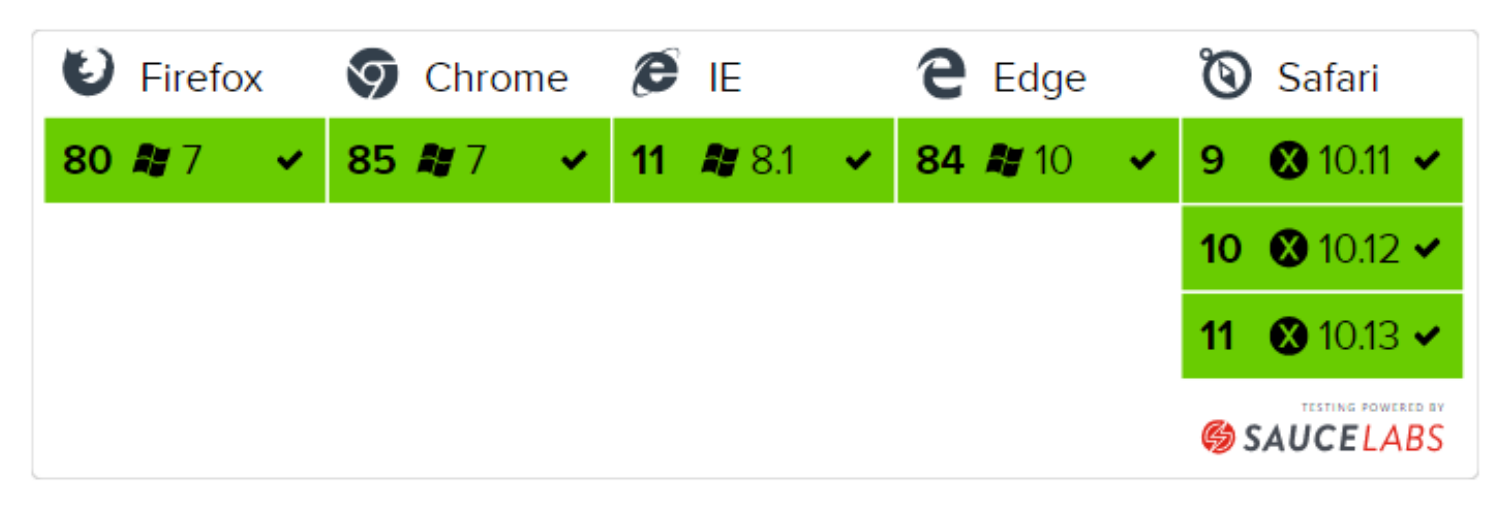
?个人主页:前端青山
?系列专栏:Vue篇
?人终将被年少不可得之物困其一生
依旧青山,本期给大家带来Vue篇专栏内容:前端网络请求:从 XMLHttpRequest 到 Axios
前言
在网络应用中,前后端的数据交互是必不可少的一部分。本文将带你从最基本的 XMLHttpRequest 开始,逐步了解并掌握 jQuery、fetch 和 Axios 这几种常用的前端网络请求方式。每种方式都有其特点和适用场景,希望通过本文的介绍,你能找到最适合项目的解决方案。
1.1 XMLHttpRequest
浏览器对XMLHttpRequest对象的支持度不足, 创建 XMLHttpRequest 对象时需要对IE浏览器做的兼
容解决。 - ActiveXObject
回顾:XHR
readyState
0-4,0表示未初始化,4表示请求已完成
status(HTTP响应状态码)
200:OK,成功
3XX【重定向系列的状态码】
301:永久重定向
302:临时重定向
307:内部浏览器(缓存)重定向
4XX【错误系列】
400:bad request,错误请求
401:鉴权失败
403:禁止访问
404:找不到对应的资源
405:方法不被允许
5XX【服务器错误,环境问题】
500:服务器内部错误(代码、环境问题)
502:bad Getway,错误网关
使用XHR请求全国高校数据接口
接口地址
https://api.i-lynn.cn/college
只循环展示 list 信息即可
接口可以直接被跨域请求
案例效果
参考代码:
<!DOCTYPE html><html lang="en"><head> <meta charset="UTF-8"> <meta name="viewport" content="width=device-width, initial-scale=1.0"> <title>Document</title></head><body> <div id="app"></div></body><script> // 1.生成XHR对象 var xhr = new XMLHttpRequest() // 2.绑定回调函数 xhr.onreadystatechange = function () { // 3. 判断是否成功 if (xhr.readyState === 4 && xhr.status === 200) { const list = JSON.parse(xhr.responseText).data console.log(list) } } // 4. 打开请求 xhr.open('GET', 'https://api.i-lynn.cn/college') // 5.发送请求 xhr.send()</script></html>1.2 jQuery
jQuery类的引入解决自己写兼容的烦恼,但现在只是使用了jQuery库中的网络请求功能,而jQuery中大量的dom的方法都是无效引入了,有点大材小用的意思。
$.ajax({ url, type:get/post, data, dataType:json/text/xml/html/jsonp success:function(res){}, error:function(){} })$.get(url,data,callback,dataType) $.post(url,data,callback,dataType)<!DOCTYPE html><html lang="en"><head> <meta charset="UTF-8"> <meta name="viewport" content="width=device-width, initial-scale=1.0"> <title>Document</title></head><body> <div id="app"> <ul> <li v-for="(item,index) of list" :key = "index">{{ item.area }}</li> </ul> </div></body><script src="lib/jquery.min.js"></script><script src="lib/vue.js"></script><script> new Vue({ el: '#app', data: { list: [] }, async mounted () { // async await // async 加载函数上,表示函数内部有异步操作 // await 记载异步操作前,把异步操作写为同步 const res = await $.get("https://api.i-lynn.cn/college", 'json') console.log(res) this.list = res.data.list } })</script></html>async:关键词,用于函数声明关键词 function 之前,标记当前的函数为异步函数
await:关键词,让当前关键词的行代码执行之后等到到结果之后再去执行后续代码
1.3 fetch
由HTML5提供的内置API
更加简单的数据获取方式,功能更强大、灵活,可以看作是xhr的升级版
基于Promise实现
fetch支持很多请求方式,但默认为 GET 请求,如果需要使用其他方式可以通过第二个自选参数的 method 选项去指定
fetch(url[,some settings]).then(fn2) .then(fn3) ... .catch(fn)// 通过url表达式来传递数据 fetch("http://xxx/?id=123") .then(res => res.json()) .then(data => console.log(data)); // post标准提交 fetch("http://xxxx/post", { method: "post", body: "uname=lisi&pwd=123", headers: { "Content-Type": "application/x-www-form-urlencoded" }}) .then(res => res.json()) .then(data => console.log(data));// post提交json数据 fetch("http://localhost:3000/books", { method: "post", body: JSON.stringify({ uname: "lisi", pwd: "123", }), headers: { "Content-Type": "application/json", }}) .then(res => res.json()) .then(data => console.log(data));注意:fetch 不会发送 cookies。除非你使用了credentials 的初始化选项 credentials: "include"
在上述代码示例中我们会看到有个 json() 方法,它是fetch的响应结果处理方法,fetch的常用响应
结果处理方法有:
text():将返回体处理成字符串类型
json():返回结果和JSON.parse(responseText)一样
使用fetch方式改写 XHR 部分案例
<!DOCTYPE html><html lang="en"><head> <meta charset="UTF-8"> <meta name="viewport" content="width=device-width, initial-scale=1.0"> <title>06 fetch</title></head><body> <div id="app"> <ul> <li v-for="item of list" :key="item.proid"> {{ item.proname }} </li> </ul> <input type="text" v-model="loginname"> <input type="text" v-model="password"> <button @click="login">登录</button> </div></body><script src="lib/vue.js"></script><script> new Vue({ el: '#app', data: { list: [], loginname: '15635878563', password: '123456' }, mounted () { // get请求 fetch('http://182.44.11.110/api/pro/list?limitNum=1') .then(res => res.json()) // 需要把promise的对象转换为json对象 .then(res => { console.log(res) this.list = res.data }) }, methods: { // post请求 login () { fetch('http://http://182.44.11.110/api/user/login', { method: 'post', body: JSON.stringify({ loginname: this.loginname, password: this.password }), headers: { 'Content-Type': 'application/json' } }).then(res => res.json()) .then(res => { console.log(res) }) } } })</script></html>1.4 axios
1.4.1 基本使用
文档:https://www.kancloud.cn/yunye/axios/234845
axios 是一个基于 promise 的 HTTP 库,可以用在浏览器和node.js中。axios是vue作者推荐使用
的网络请求库,它具有以下特性:
支持浏览器和node.js
支持promise
能够拦截 请求和响应
自动转换json数据
axios的浏览器支持

在使用axios之前需要在对应的模板文件中引入axios的js库文件,随后按照以下用法使用axios:
// GET请求方式 axios.get('/get_data?id=10010') .then(ret => console.log(ret.data))axios.get('/get_data',{ params: { id: 10010, name: 'zhangsan', age: 26 } }) .then(ret => console.log(ret.data)) //POST请求方式 axios.post('/set_data', { firstName: 'zhang', lastName: 'san' }).then(ret => { }) axios({ method: 'post', url: 'set_data', timeout: 1000, headers: {'X-Custom-Header': 'foobar'}, data: { firstName: 'zhang', lastName: 'san' } }).then(ret => { })当然axios除了支持传统的 GET 和 POST 方式以外,常见的请求方式还支持:
put:修改数据
delete:删除数据
以上方的axios请求示例为例,axios响应结果( ret )的主要属性有:
data:实际响应回来的数据(最常用)**
headers:响应头信息
status:响应状态码
statusText:响应状态信息
另外需要注意的是,在使用axios发送请求之前它允许我们通过全局配置做一些设置,这样可以方便后续的请求操作,例如:
axios.defaults.timeout = 3000【设置超时时间】
axios.defaults.baseURL = 'http://localhost/app'【设置默认地址】
axios.defaults.headers['token'] = '123123123'【设置请求头信息,通用头信息】
axios.defaults.headers.get['_token'] = '123123'
axios.defaults.headers.post['_token'] = '123123'
axios.defaults.headers.common['_token'] = '123123'【通用头信息,common可以不写】
注意:
axios发送post请求的时候,默认发送json格式数据
如果需要发送post表单类型请求,则需要指定请求头
axios.post('college',{ username: 'zhangsan', age: 22 },{ headers: { "Content-Type": "application/x-www-form-urlencoded" } }).then(ret => this.list = ret.data.list)使用axios方式改写 XHR 部分案例
<!DOCTYPE html><html lang="en"><head> <meta charset="UTF-8"> <meta name="viewport" content="width=device-width, initial-scale=1.0"> <title>07 axios</title></head><body> <div id="app"> <ul> <li v-for="item of list" :key="item.proid"> {{ item.proname }} </li> </ul> <input type="text" v-model="loginname"> <input type="text" v-model="password"> <button @click="login">登录</button> </div></body><script src="lib/vue.js"></script><script src="lib/axios.min.js"></script><script> // http://121.89.205.189/apidoc/ new Vue({ el: '#app', data: { list: [], loginname: '18813007814', password: '123456' }, mounted () { // get请求 // fetch('http://182.44.11.110/api/pro/list?limitNum=1') // .then(res => res.json()) // 需要把promise的对象转换为json对象 // .then(res => { // console.log(res) // this.list = res.data // }) // axios.get('http://182.44.11.110/api/pro/list') // .then(res => { // console.log(res) // this.list = res.data.data // }) // axios.get('http://182.44.11.110/api/pro/list?limitNum=2') // .then(res => { // console.log(res) // this.list = res.data.data // }) axios.get('http://182.44.11.110/api/pro/list', { // 推荐使用他传递参数 params: { limitNum: 3 } }) .then(res => { console.log(res) this.list = res.data.data }) }, methods: { // post请求 login () { // fetch('http://182.44.11.110/api/user/login', { // method: 'post', // body: JSON.stringify({ loginname: this.loginname, password: this.password }), // headers: { // 'Content-Type': 'application/json' // } // }).then(res => res.json()) // .then(res => { // console.log(res) // }) axios.post('http://182.44.11.110/api/user/login', { loginname: this.loginname, password: this.password }).then(res => { console.log(res) }) } } })</script></html>1.4.2 拦截器
目的:在请求 发出去之前 / 收到响应之后 做一些操作
请求拦截器

axios.interceptors.request.use(function(config){ // 在请求发出去之前进行一些信息设置 return config; },function(err){ // 处理响应的错误信息 });响应拦截器

axios.interceptors.response.use(function(res){ // res为axios对象 return res; },function(err){ // 处理响应的错误信息 });<!DOCTYPE html><html lang="en"><head> <meta charset="UTF-8"> <meta name="viewport" content="width=device-width, initial-scale=1.0"> <title>Document</title></head><body> <div id="app"> <ul> <li v-for="(item,index) of list" :key = "index">{{ item.area }}</li> </ul> </div></body><script src="lib/vue.js"></script><script src="lib/axios.min.js"></script><script> axios.interceptors.request.use(function(config){ // 在请求发出去之前进行一些信息设置 console.log('loading......') return config; },function(err){ // 处理响应的错误信息 }); axios.interceptors.response.use(function(res){ // res为axios对象 console.log('loading end') return res; },function(err){ // 处理响应的错误信息 }); new Vue({ el: '#app', data: { list: [] }, mounted () { // axios.get('https://api.i-lynn.cn/college') // .then(res => { // console.log(res) // this.list = res.data.data.list // }) axios({ url: 'https://api.i-lynn.cn/college', method: 'GET', headers: { 'content-type': 'application/json' } }).then(res => { console.log(res) this.list = res.data.data.list }) } })</script></html>总结
通过本文的介绍,我们从最基础的 XMLHttpRequest 逐步过渡到了现代的 Axios,每一种请求方式都有其独特的优势和适用场景。XMLHttpRequest 虽然历史悠久,但依然在某些场景下有其价值;jQuery 简化了兼容性问题,但引入了额外的库;fetch 是原生的现代 API,简洁且功能强大;Axios 则是 Vue 官方推荐的库,支持 Promise,使用起来非常方便。希望本文能帮助你在实际项目中选择合适的网络请求方式。